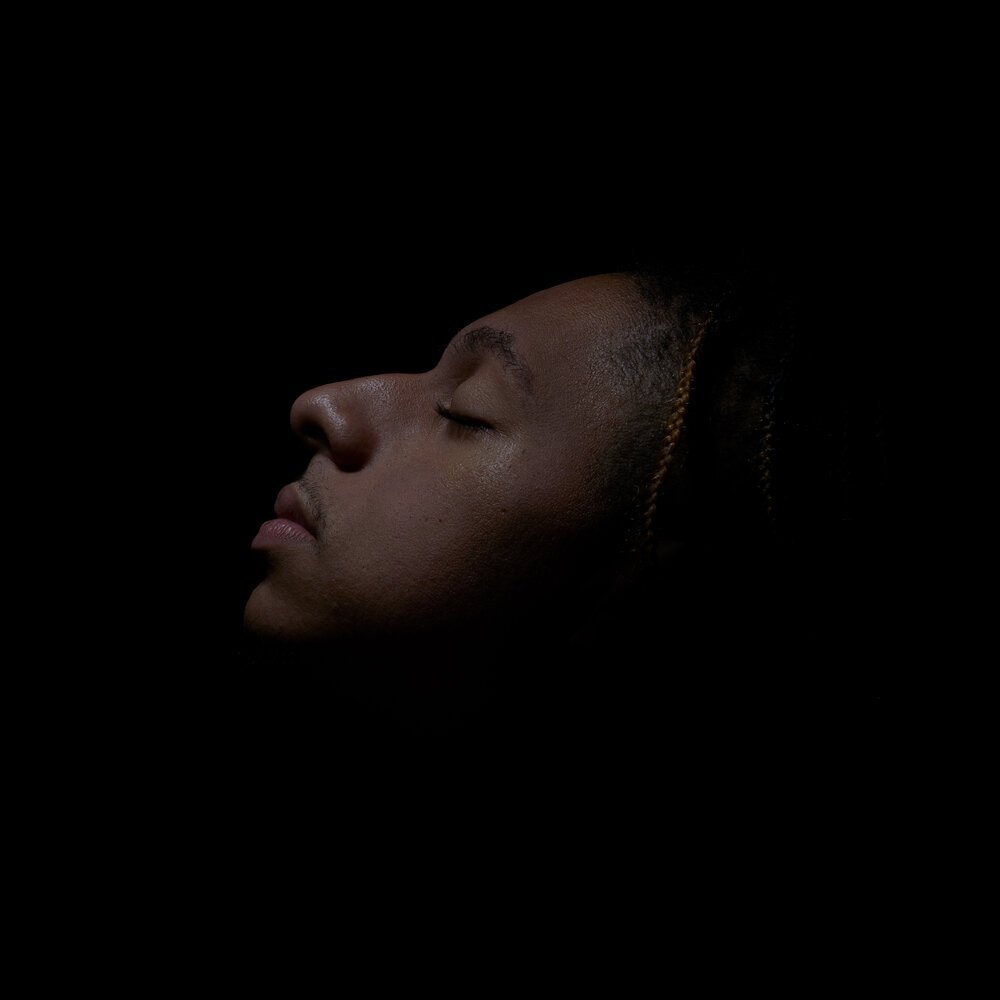"Nebulae—Commune with the Ancestors" is an ongoing series of evocative portraits. Drawing inspiration from African mask traditions and the metaphysical concept of the nebula as a metaphor for ancestral presence and cosmic lineage, this installation presents a meditation on the sovereignty of quiet, ancestral communion and the dynamic, ever-evolving nature of Black identity.
Nebulae as Ancestral Space
In the cosmos, a nebula is a cloud of dust and gas, an interstellar nursery where stars are born. It is a space of creation and transformation, a metaphor for the ancestral forces that shape and inform Black identity. Like stars emerge from these cosmic clouds, each subject in these images emerges from the rich darkness, a visual metaphor for how ancestral spirits form the foundation of life, history, and identity.
This installation presents the idea that Black life is nebulaic—connected to vast, unseen cosmic forces and ancestors whose presence, though not always visible, is ever-present and essential to existence. The nebulous background from which these faces appear represents the infinite and timeless connection to the ancestors, evoking the idea that the subjects are in communion with those who came before, reaching back into the cosmic history of their lineage while also shaping the future.
African Masks as Metaphor
Each image draws on the iconography and spiritual meaning found in traditional African masks, which act as vessels between the human and spirit worlds. These masks, used in African rituals, represent not only physical forms but spiritual truths—they are containers for ancestral wisdom, offering a way for the living to commune with the divine.
Tolan's portraits operate as contemporary interpretations of this ancestral communion. The careful lighting and minimalistic composition create faces that emerge from the shadows, echoing the way African masks hold both the seen and unseen, the tangible and spiritual. The figures in these images are rendered in a state of calm, contemplative quiet, reminiscent of masks used in rites of passage, spiritual reflection, and connections with the cosmos.
Acts of Fugivity: Resisting Fixed Representation
Fred Moten's theory of fugitivity plays a central role in how the Black identity is represented in "Nebulae." Fugitivityrefers to the resistance to being captured by systems of power, a refusal to be fixed or constrained by static representations. In this installation, the faces appear but are never fully "captured" in traditional form. They exist in the liminal space between visibility and invisibility, challenging the viewer to see them not as objects for consumption but as beings in process—resisting the stasis imposed by external forces.
The subjects in this series are not performing for the camera; they are not here to be commodified or reduced to simplistic narratives. Instead, their presence suggests an interiority, a space of sovereign quiet where they are in dialogue with the ancestors beyond the gaze of the viewer. This echoes Kevin Quashie's Sovereignty of Quiet, where Black life is given the freedom to exist outside public performance in the sanctity of its own sovereign space.
The Sovereignty of Quiet: Spiritual Quietude and Self-Determination
"The Sovereignty of Quiet," as explored by Kevin Quashie is about embracing the inner life and spiritual depth of Black existence, away from the demands of protest or public visibility. In these images, the subjects are in a state of quiet reflection, embodying a moment of spiritual quietude where they are in touch with their ancestors.
Tolan's minimalism and darkness create a visual language of quiet power. The lack of distraction allows viewers to focus on the subtle, sovereign presence of the subjects—inviting them to contemplate the cosmic forces at play. The subjects' closed eyes evoke a sense of inner reflection, as if they are listening to the voices of the ancestors, communing in a space of sacred quiet.
This quietude is not passive but radically self-determined. It asserts the subject's sovereignty, refusing to be reduced to public spectacle or overt resistance. Instead, they are rooted in their own power, their beauty existing for themselves and their communion with the ancestors, not for the viewer's gaze or the structures of commodification.
Anteaesthetics: Resisting Form
In line with Rizvana Bradley's concept of Anteaesthetics, this installation critiques the traditional ways Black bodies are represented and consumed. Anteaesthetics suggests that Black identity resists being fixed into conventional forms of beauty, perception, or aesthetics. The portraits in "Nebulae" are not about fitting into established norms of portraiture or conforming to ideals imposed by Eurocentric aesthetics. Instead, they explore how Blackness exceeds and disrupts form.
The minimal lighting, abstracted compositions, and the subjects' refusal to "perform" for the viewer are all acts of disruption. The images deny the viewer the ability to fully consume or capture the subject in a traditional aesthetic sense. Light and shadow are used to conceal as much as they reveal, suggesting that there is always more beneath the surface—a refusal to be fully known or objectified.
In this way, the portraits embody non-representational Black aesthetics, where the subjects are seen as forces of being rather than objects to be visually consumed. This echoes Bradley's critique of form, where the subject escapes the fixed structures of representation, existing instead in the space of fugitivity and becoming.
Conclusion: Blackness as a Cosmic Force
"Nebulae—Commune with the Ancestors” invites viewers into a space where Black identity, ancestral wisdom, and the cosmos converge. The subjects in these portraits are part of a cosmic lineage connected to the ancestors through the metaphor of the nebula—an infinite, timeless space of creation and transformation.
Through the quiet power of these images, Tolan engages with the fugitivity of Black life, the sovereignty of quiet, and the resistance to form. The portraits do not seek to conform to aesthetic norms or perform for the external gaze. Instead, they offer a space of contemplation, where viewers are invited to witness the sacred, self-determined presence of Black identity in communion with the ancestors, free from the demands of resistance or representation, existing in their own cosmic power.





























